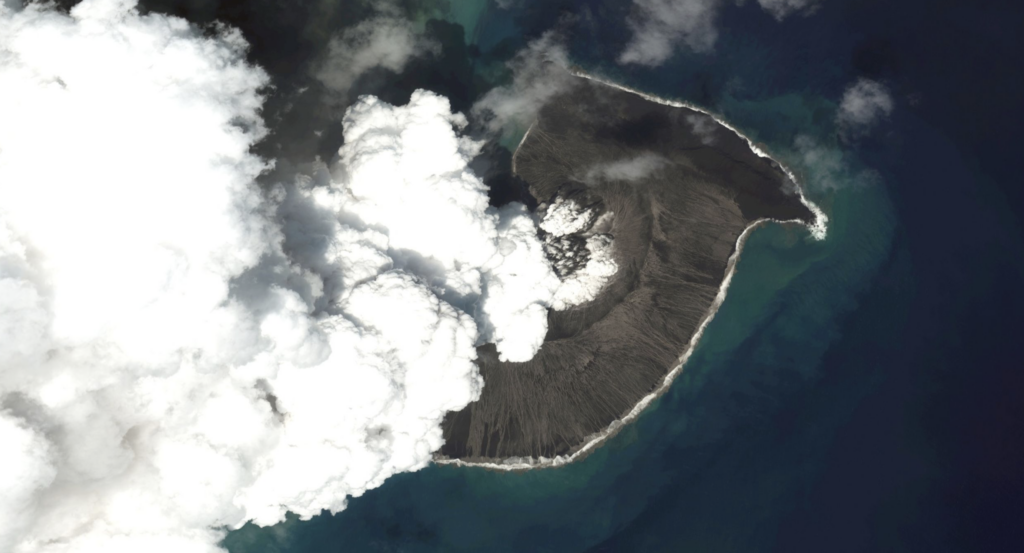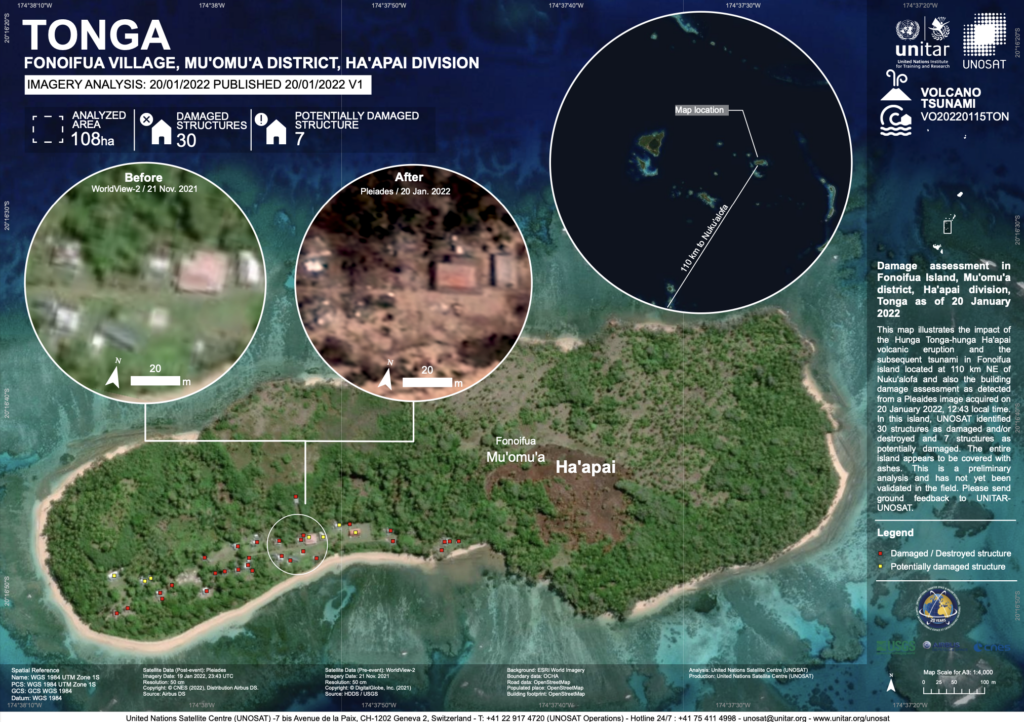
A powerful volcanic eruption has obliterated a small, uninhabited South Pacific island known as Hunga Tonga-Hunga Ha’apai, with the instantaneous ash cloud breaking through the top of the troposphere to form an umbrella-shaped cloud nearly 500 kilometers in diameter.
Volcano warning is still very difficult
Nathan J Wood, a supervisory research geographer with the USGS Western Geographic Science Center, said predicting volcanic eruptions is very challenging. While sensors can easily be placed near the volcanic craters when monitoring terrestrial volcanoes, most terrestrial volcanoes on Earth still lack sufficient monitoring data, constrained by funding and manpower. The eruption of Tonga is a submarine volcano, and many active volcanoes of global 1350 active ones are submarine volcanoes as well, which is far beyond the ability of volcanologists to carry out underwater or even deep-sea monitoring and warning.

“The current global lack of monitoring of submarine volcanoes is not up to the level of accurate prediction. Earth science is now moving toward deep space, deep earth, and deep sea, and volcanism is closely related to all three, so efforts should be made in these areas,” called Liu Jiaqi, Academician of the Chinese Academy of Sciences.
Global volcanoes may not suffer cascading effects
Following the violent eruption of the volcano on the Tongan island, global concern about volcanic activity has risen again, with claims widely on social media that Japan’s Mount Fuji is showing increased signs of activity and could erupt soon. The size of the eruption of the Tonga volcano is quite impressive, but it is not considered a supervolcano.
Heather Handley, volcano scientist and Adjunct Associate Professor at Monash University in Australia, said that the energy released by the eruption was quite powerful, judging from the height of the ash rushing to the top of the troposphere. Because the eruption has not been finished, the world can only roughly estimate its volcanic eruption index (VEI) of about 4-5. It is the strongest volcanic eruption since the 1991 eruption of the Philippines Pinatubo (VEI-6) but is still far from having caused the “year without a summer” of the 1815 eruption of Indonesia’s Tambora volcano (VEI -7).
Some Americans are anxious and fearful about whether the Yellowstone supervolcano will erupt. Although the shock waves of Tonga’s eruptions travel through the atmosphere and tsunamis travel across the Pacific Ocean, it is an exaggeration to say that Tonga’s eruptions can drive volcanoes around the world. The Tonga volcanoes are in a different volcanic group from Mount Fuji in Japan and Yellowstone in the United States.

But it is not to say that there is no connection between these volcanoes. According to the Washington Post, they are all located in the Pacific Ring of Fire. The latter extends from the southern tip of South America, along the west coast of North America, across the Bering Strait, down through Japan, to New Zealand. It is home to about 75 percent of the world’s active volcanoes, according to the U.S. Geological Survey.
In recent years, news of large-scale earthquakes and volcanoes around the world have been frequently released, causing speculation about whether the Earth is entering an active period of crustal movement. In this regard, there is no clear conclusion from the scientific community.
Volcanic eruptions may affect global climate
After the eruption of the Tonga volcano, the media paid particular attention to its potential impact on the global climate since large-scale eruptions in history did have such an effect. The 1783 Laki eruption in Iceland led to an unusually cold winter in Europe from 1783 to 1784; the 1815 Mount Tambora eruption in Indonesia caused a severe climate catastrophe, with the global average temperature dropping by about 0.4 to 0.7 degrees the year after the eruption, resulting in the “year without a summer” in many parts of the Northern Hemisphere; the 1991 Mount Pinatubo eruption in the Philippines injected a large number of aerosols into the stratosphere, and the global average temperature dropped by about 0.5 degrees a few months later.
The main reason why volcanic eruptions cause cooling is that they inject sulfur-containing aerosols into the atmosphere, and after these aerosols enter the stratosphere, they can help the Earth reflect more sunlight out, thus producing a cooling effect within the atmosphere. However, U.S. satellite monitoring photos show that as of the 16th, Tonga volcano erupted 420,000 tons of sulfur dioxide. Michael E. Mann, Distinguished Professor of Meteorology at Pennsylvania State University, points out that the eruption of Mount Pinatubo eventually released 20 million tons of sulfur dioxide, so to achieve the impact of previous eruptions on the temperature drop, Tonga volcano needs to emit more sulfur dioxide.
Tonga and global economic activity are affected
According to AFP, a South Pacific submarine cable operator said on the 18th, the recent tsunami triggered by the Tonga volcanic eruption led to the only submarine communication fiber optic cable broken in Tonga, which is expected to be repaired in two weeks at the earliest. The broken submarine fiber optic cable is 827 kilometers long and connects Tonga to Fiji, another South Pacific island nation.
The U.S. CNBC reports that Tonga is a small island nation dominated by agriculture, fishing, and tourism, all of which would have been severely negatively impacted by the volcanic eruption, especially in the commercial areas along the coast. In addition, local homes, vehicles, and infrastructure have been damaged, and the severity of the damage may be further exacerbated by the inability to start aid efforts promptly.

The Nihon Keizai Shimbun reports that the Tonga volcanic eruption may have an impact on maritime transportation. Information indicates that the volcanic eruption under the sea in Tonga has produced pumice, which will have a greater impact if it reaches Australian ports and other locations and hinders maritime transportation.
Countries along the Pacific coast were also widely affected, with tsunami warnings issued in many countries such as Fiji, Japan, and New Zealand. Volcanic eruptions caused flooding in parts of the U.S. coasts of Alaska and California, and flooding from tidal waves was reported in Chile. In addition, Japan has reported damage to fish vessels and disruption of operations. All of these can result in varying degrees of economic loss.
(Source: Xinhua, CNBC, AFP, Nihon Keizai Shimbun, Maxar Technologies, PetaPixel, UNOSAT, aljazeerafinancial.com)



